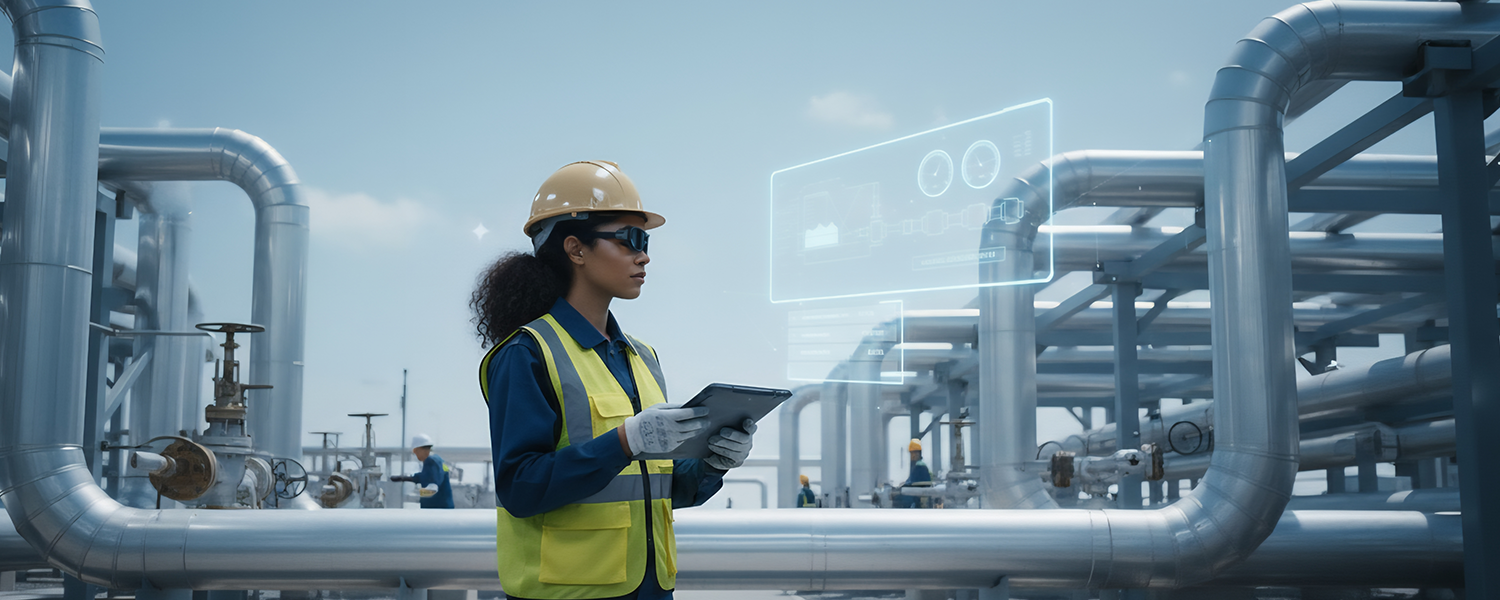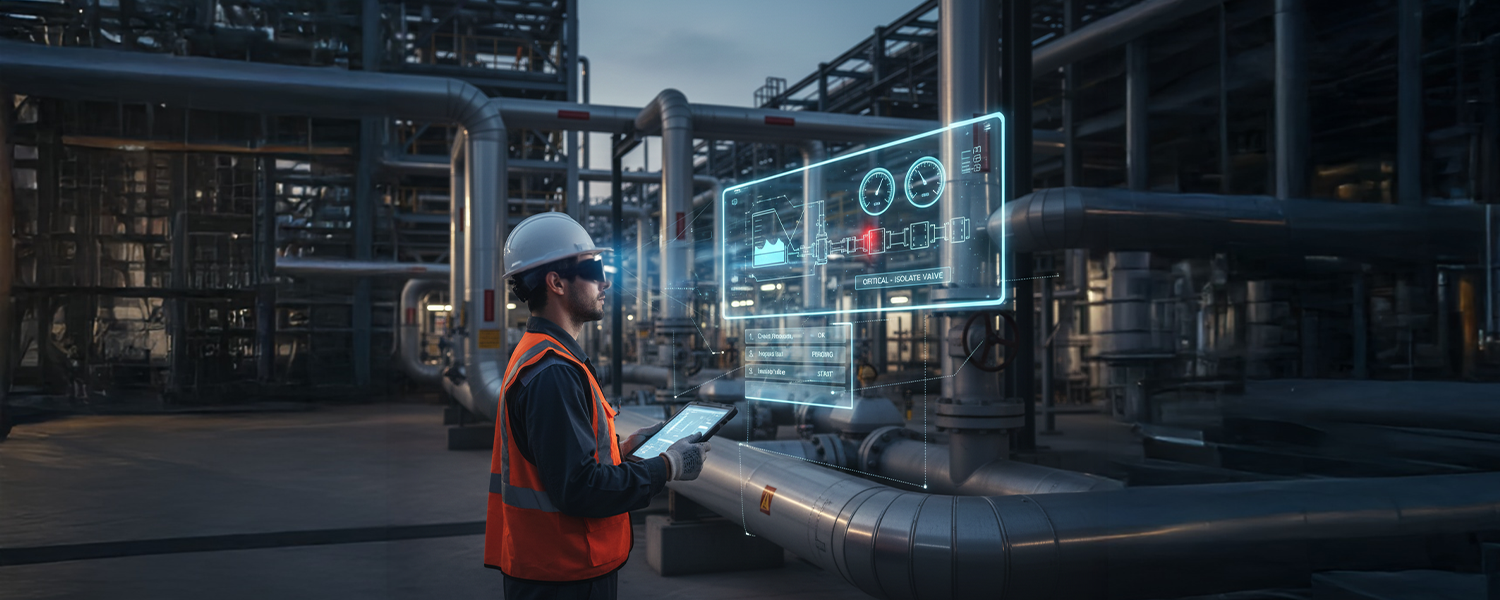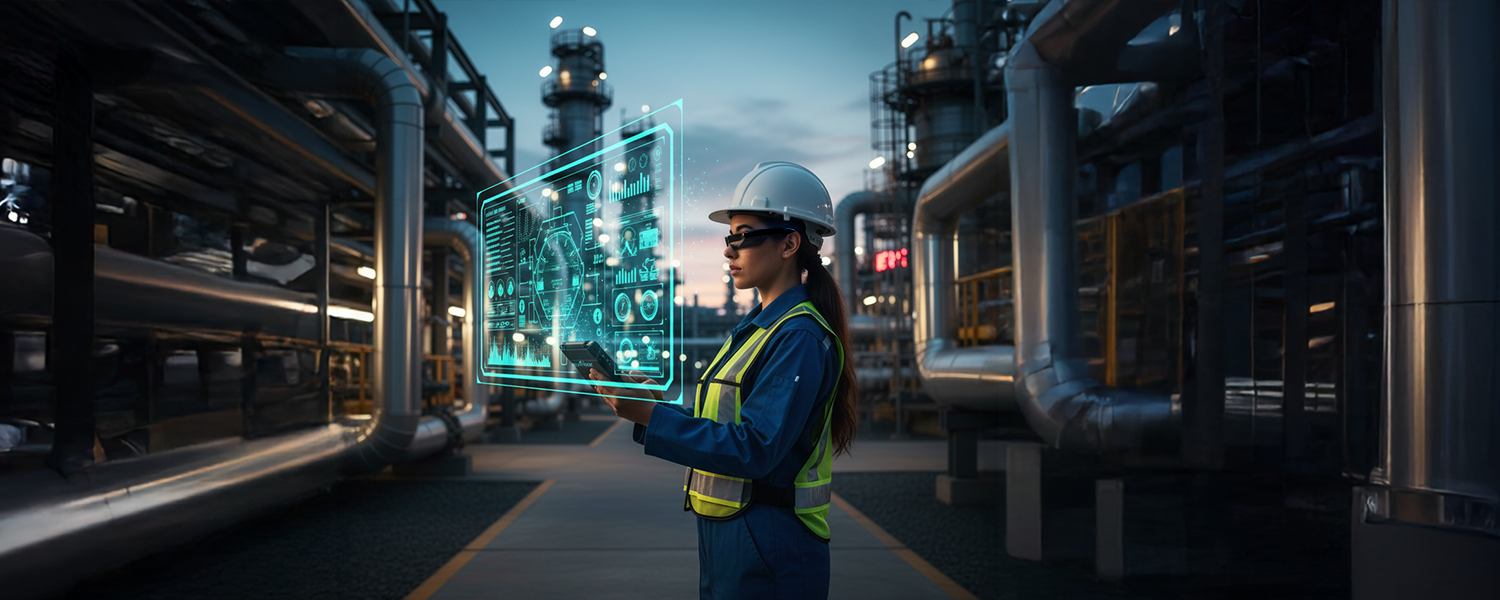
The LNG and gas pipeline sector sits at the heart of global energy supply chains. Yet despite decades of engineering progress, distribution remains stubbornly complex: networks span vast distances, many assets are located in remote or hazardous environments, regulatory demands are growing, and system complexity is increasing as digitization, sensor arrays, and third-party operators proliferate. These realities create operational, safety, and financial pain points for utilities, midstream operators, and service contractors alike.
AR Genie’s augmented reality (AR) platform — purpose-built for remote assistance, context-aware guidance, and visual collaboration — is uniquely positioned to tackle these distribution challenges. This blog breaks down the core pain points in LNG and gas pipeline distribution and shows, slide-by-slide, how AR Genie can deliver measurable value: faster repairs, safer operations, improved compliance, and lower TCO.
Pipelines and LNG terminals are spread across thousands of kilometers, often in inhospitable terrain or offshore. Mobilizing specialist crews and equipment for every inspection or repair is expensive and slow.
Many systems in the field are decades old and heterogenous: different vintages of valves, compressors, meters, and control systems — often from different OEMs — complicate diagnosis and repair.
Operators must meet strict HSE and regulatory requirements (leak detection, isolation procedures, pressure testing, permits-to-work). Any human error during maintenance can lead to catastrophic incidents and heavy fines.
Experienced technicians are retiring, and new technicians often lack tacit, hands-on knowledge. Onsite staff may not have experience with an obscure asset or custom modification left from previous contractors.
Leaks, controller failures, or compressor faults require immediate, accurate action. Delays can impact supply, escalate repair costs, and risk safety and reputational damage.
Traditional inspection relies on manual rounds, paper checklists, or disconnected mobile apps. Data entry is inconsistent, leading to lost history and weak predictive maintenance signals.
Pipeline operators coordinate with control centers, third-party service providers, regulators, and landowners. Siloed communication channels slow decision making in urgent situations.
SCADA, GIS, CMMS, and IoT sensors produce useful data but live in separate systems. Operators struggle to bring all relevant context to a field technician’s hands when it matters.

Below are the high-impact ways AR Genie solves distribution and LNG pain points, with the operational outcome for each.
Problem: A valve actuator fails at an unmanned compressor station 200 km from the nearest specialist.
AR Genie fix: A local technician connects via AR Genie to a remote subject-matter expert (SME). The SME sees the technician’s point-of-view video, overlays annotations (arrows, part numbers), and drops step-by-step guided instructions on the live video.
Outcome: Fault isolation time drops from days to hours, specialist travel costs are eliminated, and repairs follow verified procedures that reduce rework and safety risks.
Problem: Critical isolation or purging steps are executed inconsistently across crews.
AR Genie fix: Digitized SOPs and work instructions appear in the technician’s headset or tablet with precise AR overlays (highlighted valve handles, torque values, safe sequence steps). Conditional logic prevents advancing until safety checks are verified (e.g., pressure < threshold).
Outcome: Consistent compliance with HSE protocols, fewer near-misses, and an auditable trail for regulators.
Problem: Field inspections are manual, inconsistent, and take too long.
AR Genie fix: Technicians use AR to scan assets; the platform recognizes equipment (via computer vision), auto-populates inspection fields, and attaches photos, annotations, GPS, and timestamps directly into the operator’s CMMS.
Outcome: Inspection times shrink, defect detection improves, and maintenance decisions are based on richer, standardized records.
Problem: New hires lack hands-on experience with legacy assets.
AR Genie fix: Trainees follow interactive AR training modules that overlay guidance in real time on actual equipment. Senior technicians can do live walkthroughs or record annotated “how-to” sessions for later use.
Outcome: Faster ramp-up of junior staff, fewer mentor-hours spent on basic tasks, and preservation of tribal knowledge.
Problem: Operators lack a single view that combines field visuals with real-time sensor data.
AR Genie fix: AR overlays real-time telemetry from SCADA/IoT (pressure, temperature, flow) on the technician’s view of a compressor or valve, allowing immediate correlation between physical cues and system state.
Outcome: Quicker root-cause analysis and smarter decisions in complex incidents.
Problem: Incident response requires many stakeholders and record-keeping for incident review.
AR Genie fix: Multiple remote participants can join the same AR session; the entire session (audio, annotations, video) is recorded and stored with metadata for after-action review or regulatory audits.
Outcome: Faster consensus-driven action, transparent audits, and better lessons-learned capture.
Problem: Offshore platforms or remote pump stations have constrained connectivity.
AR Genie fix: The platform supports adaptive streaming, progressive sync of key assets, and offline-first documentation workflows so technicians can keep working and sync when connectivity improves.
Outcome: Productivity retained in poor-connectivity environments without sacrificing data integrity.
When operators adopt AR Genie across LNG and pipeline operations, the following KPIs typically improve:
Quantifying these benefits can quickly justify AR Genie investments. For example, cutting one specialist trip per month at $2,000 per trip plus halving MTTR on critical assets yields rapid payback. The exact numbers depend on fleet size, failure rates, and geographic spread — but the architecture of value is consistent.

Operators must ensure secure data flows (end-to-end encryption), role-based access control, and proper retention policies for recorded sessions. AR Genie is designed to support enterprise security policies, integrate with SSO, and provide configurable retention to meet regulatory requirements. Additionally, change management is critical—success depends on early stakeholder buy-in from operations, safety, and IT teams. Start small, demonstrate wins, and use champions to accelerate adoption.
Distribution in LNG and gas pipelines presents unique operational, safety, and logistical challenges. AR Genie’s combination of live remote assistance, contextual AR overlays, CMMS/SCADA integration, and low-bandwidth optimizations directly addresses these pain points. The result is not just incremental improvement but a step-change: faster, safer interventions; better knowledge transfer; and a measurable reduction in operational cost and compliance risk.
If your operation is wrestling with long repair cycles, costly specialist dispatches, or inconsistent inspections — AR Genie is designed to plug into your workflows and start delivering value quickly. Want a tailored pilot plan showing expected MTTR reduction and cost savings for your assets? I can draft a one-page pilot proposal (with KPIs and timeline) based on your network size and three typical failure modes — tell me which asset classes you want to prioritize and I’ll prepare it.